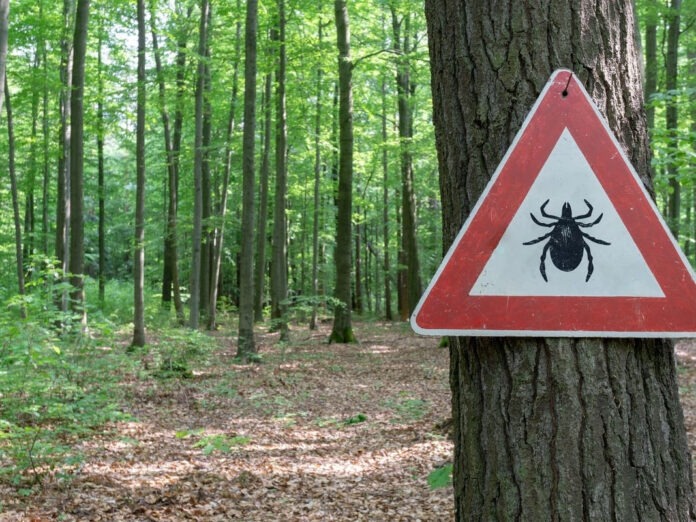Long Horn Ticks Invading Connecticut
By Barbara Heimlich
Since its detection in the U.S. in 2017, the long horned tick (Haemaphysalis longicornis), originally native to East Asia, has spread to at least 21 states and the District of Columbia. This invasive tick carries Ehrlichia chaffeensis, a bacterium that causes Human Monocytic Ehrlichiosis, a rare infectious disease.
The Connecticut Agricultural Experiment Station (CAES) confirmed its first fully engorged, human-parasitizing specimen in 2018 in Fairfield County, with established populations following in 2020. The tick has since been found in multiple towns across Fairfield and New Haven counties, as well as individual specimens in New London and other areas.
Ehrlichiosis is the general name describing a group of diseases carried and transmitted by certain ticks (vectors), such as the long horned tick, the blacklegged tick (Ixodes scapularis), the Lone Star tick (Amblyomma americanum), and the American dog tick (Dermacentor variabilis). The disorders are characterized by similar symptoms.
The symptoms of Human Monocytic Ehrlichiosis (HME) may include a sudden high fever, headache, muscle aches (myalgia), chills, and a general feeling of weakness and fatigue (malaise) within a few weeks after initial infection. In addition, in many cases, laboratory findings may indicate an abnormally low number of circulating blood platelets (thrombocytopenia), a decrease in white blood cells (leukopenia), and an abnormal increase in the level of certain liver enzymes (hepatic transaminases). In some individuals, symptoms may progress to include nausea, vomiting, diarrhea, weight loss, and/or confusion. If HME is left untreated, life-threatening symptoms, such as kidney failure and respiratory insufficiency, may develop in some cases.
The long horned tick’s ability to reproduce asexually and feed on a wide range of hosts — including humans, domestic animals, and wildlife — has contributed to its rapid expansion. Its role as a potential vector for disease has raised concerns among health officials, particularly in light of new findings. A single female tick can lay up to 3,000 eggs, and this massive offspring is responsible for the tick being discovered in hordes on certain areas and on their victims.
Connecticut cases continue to rise from just two cases between 2008 and 2018 to 28 cases from 2019 through 2023. Experts suggest the disease is likely underreported and expect further increases as the tick continues to expand its range.
“This discovery highlights the growing threat posed by invasive ticks,” said Dr. Goudarz Molaei, director of the CAES Passive Tick and Tick-Borne Disease Surveillance Program. He added that mitigating the risks associated with invasive tick species must become a national priority. “We need to ensure we’re prepared not just to monitor but to respond effectively to the changing landscape of tick-borne disease transmission.”
Range
Samples of the Asian long horned tick have been found in 17 states. They are predominantly along the eastern seaboard, though they have ranged out to the Midwest. Locations include Connecticut, New Jersey, Pennsylvania, Delaware, New York, Ohio, West Virginia, Virginia, Kentucky, Tennessee, Maryland, North Carolina, South Carolina, Georgia, Missouri, Arkansas, and Massachusetts.
CAES continues to monitor the tick’s presence and encourages residents to take preventive measures to reduce the risk of bites, including using insect repellents, checking for ticks after outdoor activity, and keeping yards free of tall grass and brush.
The good news about the ticks is that most tick control agents that we currently have seemed to kill them. Pesticide applications have limits. Asian long horned ticks hide easily in vegetation, and unless the pesticide is applied directly to the insect, they’re likely to survive.
Sources: National Organization for Rare Diseases; Connecticut Agricultural Experiment Station



